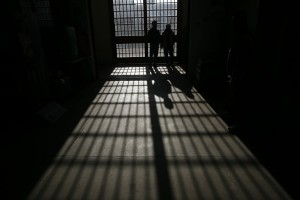Pakistan’s Prison Class System
What makes the better class so important and how is it allotted?
The recent accountability drive has seen a number of high-profile prisoners — including former president, Asif Ali Zardari, and former prime minister, Shahid Khaqan Abbasi — demanding that they be provided better class facilities in jail. However, the Pakistan Tehreek-i-Insaf government in its latest move has decided to withdraw provision of ‘A class’ jail facilities to these under-trial prisoners.
How is a prisoner classified?
A prisoner confined in prison may be classified as a convicted prisoner, an unconvicted or under-trial prisoner, a civil prisoner or a state prisoner.
What is the prisoner class system?
According to the Pakistan Prisons Rules 1978, convicted prisoners are classified into superior class; ordinary class; and political class.
Superior class includes A and B class prisoners while ordinary class comprises prisoners other than superior class. Political class comprises prisoners who commit crimes not for personal gain but for political motives. This class is not criminal and does not require reformative or correctional treatment.
There are only two classes of under-trial prisoners; better class and ordinary class. Better class includes those under-trial prisoners who by social status, education or habit of life have been accustomed to a superior mode of living and will correspond to A and B class of convicted prisoners. Ordinary class will include all others and will correspond to C class.
How is the class of a prisoner decided?
A class contains all prisoners who are: casual prisoners of good character, by social status, education and habit of life have been accustomed to a superior mode of living and, have not been convicted of offence involving elements of cruelty, moral degradation, personal greed, serious or premeditated violence, serious offence against property, offences relating to the possession of explosives, firearms and other dangerous weapons with object of committing or enabling an offence to be committed and abetment or incitement of offences falling within these sub-clauses.
Former or serving gazetted military or civil officer, or a sitting or former parliamentarian are eligible for the superior class.
Class B consists of prisoners who by social status, education or habit of life have been accustomed to a superior mode of living. Habitual prisoners can be included in this class by order of the government.
Class C consists of prisoners who are not classified as A and B.
Who decides the class?
For ‘A’ and ‘B’ classes the classifying authority will be the government. Courts may classify prisoners into A and B class pending final orders of the government. Class ‘C’ will be classified by the trying courts, but such prisoners will have a right to apply for revision to the government.
How are political prisoners categorised?
Classification of political prisoners is determined by the authority ordering their retention in prison.
What are the facilities provided to the superior/better class (A or B)?
 Superior class prisoners are entitled to books and newspapers, a 21-inch television, a table and a chair, a mattress, personal bedding and clothing and food. The prisoners have to pay for all this themselves. The government is only obligated to provide them security in a high-security ward where they will be kept away from other prisoners.
Superior class prisoners are entitled to books and newspapers, a 21-inch television, a table and a chair, a mattress, personal bedding and clothing and food. The prisoners have to pay for all this themselves. The government is only obligated to provide them security in a high-security ward where they will be kept away from other prisoners.
Rooms are supplied with a cot, one chair, one teapot, one lantern if there is no electric light, and necessary washing and sanitary appliances. ‘A class’ prisoners may supplement the furniture by other articles within reasonable limit at their own cost, at the discretion of the Superintendent.
When several superior class prisoners are confined together, two ‘C class’ prisoners may be provided to cook food for them. If a superior class prisoner is confined individually he may be permitted a ‘C class’ prisoner for cooking. One attendant and one cook prisoner may be allowed to superior class prisoners up to 10 in number.
 Jahangir's World Times First Comprehensive Magazine for students/teachers of competitive exams and general readers as well.
Jahangir's World Times First Comprehensive Magazine for students/teachers of competitive exams and general readers as well.



